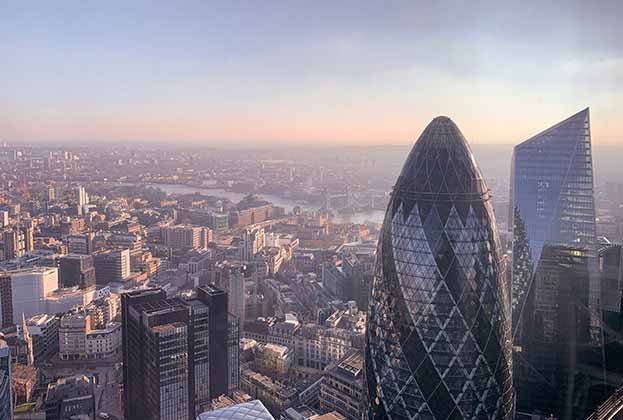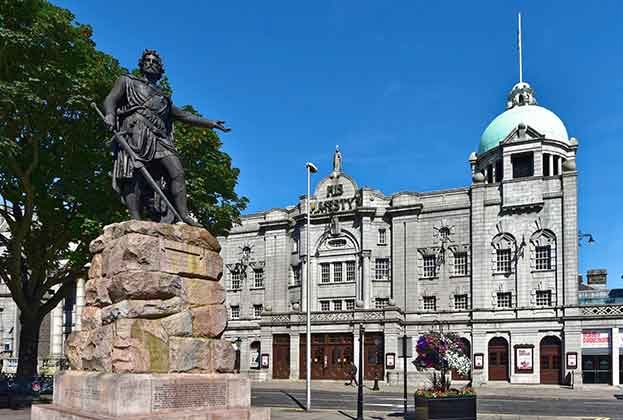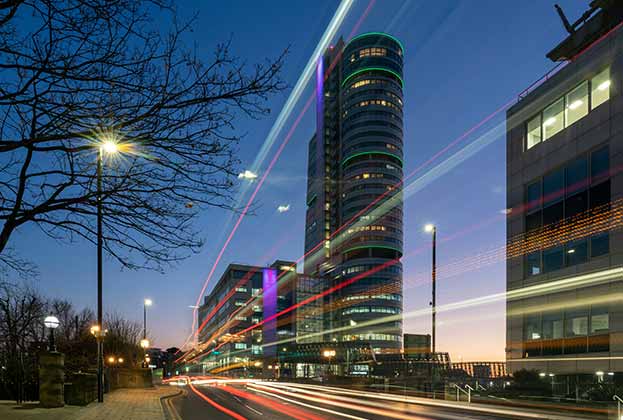The Greater London and South East office markets reported a 46 per cent increase in take-up in 2021 compared with 2020, which itself was 12 per cent above the take-up for 2019. This positive momentum isn’t slowing either with Foundation Park in Maidenhead recently securing Ultra Electronics at a headline office rent of £35.75 per sq ft.
With the year off to a positive start below are six trends we expect to play out in the year ahead.
1. Increasing demand for redefined Grade A
Occupiers are hunting for best in class space with user experience front of mind, which has created a new class of Grade A. This new ‘redefined Grade A’ majors on workspace as a service offering (amenity driven, communal collaboration workspaces and outdoor space, enhancing mental wellbeing, and so on) that companies can use as a tool to attract staff back to the office. Last year Grade A space accounted for 65 per cent of take-up in the region, the highest proportion in the last three years.
2. Exponential rental growth
We expect to see exponential rental growth for redefined Grade A stock as occupiers compete for the best quality space in a market with limited supply. There were 13 submarkets in the region that achieved record rents in 2021; Windsor, Bromley and St Albans all experienced over 10 per cent prime rental growth.
3. Rentalisation of roof terraces
Outdoor space is now seen as a necessity for many occupiers. Landlords that offer well-dressed and designed roof terraces can achieve ‘half rent’ on this space, justifying the capital expenditure of providing these properly furnished terraces and increasing capital values.
4. Growing green demands forging closer landlord tenant relationships
Companies are taking a closer look at the real estate they occupy to make sure it is in line with their carbon policies. We’re seeing minimum green credentials, with some occupiers only considering buildings with EPC B or better and a greater emphasis on a building’s ‘carbon in use’. We anticipate landlords and occupiers working closer than ever before to help each other meet their respective sustainability targets.
5. Repurposing of obsolete stock
We’ve seen a number of fringe office buildings in more challenging markets, on low density larger sites, being sold for industrial conversion (for example, the old Virgin HQ in Crawley), where the demand for logistics units have driven up land values, outstripping existing office use values. We expect this trend to continue, as occupiers continue to gravitate to amenity rich, best in class business parks or vibrant urban locations.
6. Spec development on the rise
Over the course of 2022 we will see investors and developers increasingly interested in ground up development opportunities due to the impending supply crunch of ‘exemplar’ office buildings. Even with less compelling carbon considerations for new builds (in the construction process) as opposed to refurbishments, we expect an increase in development opportunities being brought forward as investors look to deliver stock taking advantage of the tight supply/demand dynamics.
The demand for the best in class, ‘redefined’ Grade A will continue over the course of 2022, with an even greater polarisation between Grade A accommodation and more secondary offerings. Landlords who really get to grips with the occupier user experience, ensuring their office building(s) provide collaboration and social interaction space, facilitating staff essentially having ‘fun’ in their place of work, will be the winners and exceed the perceived rental expectations for that specific centre. Rent has never been less important for an occupier.
Further information
Greater London and South East ofices record 46% YOY growth in 2021

-impact-the-office-sector(1).jpg)

.jpg)






